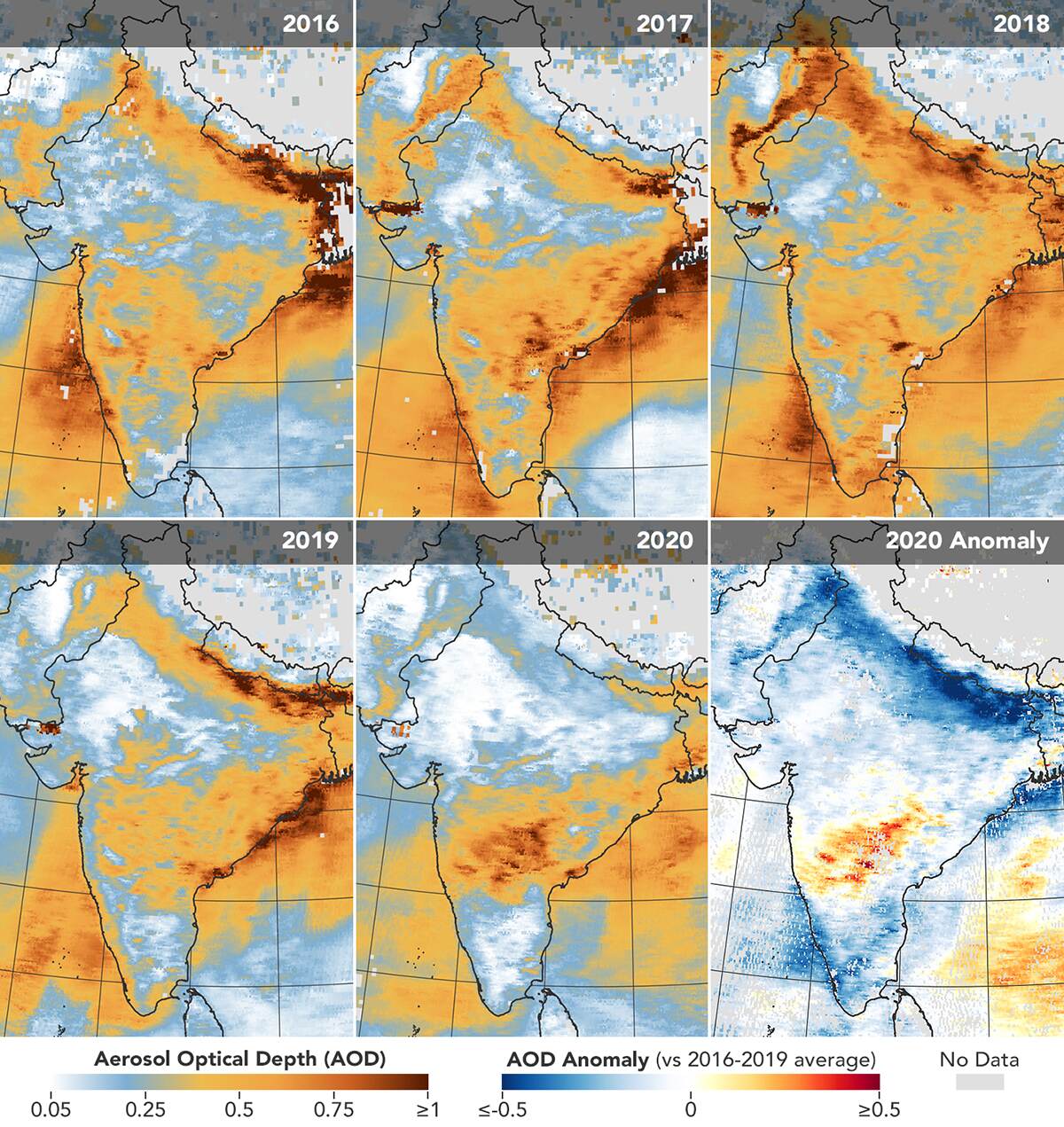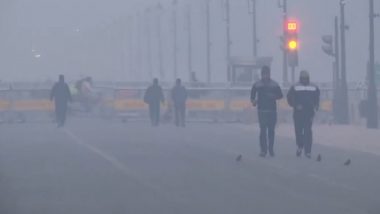Washington, April 23: The air pollution over Northern India dropped to a 20-year-low for this time of the year due to the nationwide lockdown in the country. According to satellite data published by US space agency National Aeronautics and Space Administration (NASA), India witnessed decreased activity at factories and reduction of car, bus, truck, and airplane traffic. After just a week of reduced human activities, NASA satellite sensors observed aerosol levels at a 20-year low for this time of year in northern India.
Pawan Gupta, a Universities Space Research Association (USRA) scientist at NASA’s Marshall Space Flight Center said that it was certain that there will be changes in atmospheric composition in many places during the lockdown. Expressing surprise, he said he had never seen aerosol values so low in the Indo-Gangetic Plain at this time of year. Air Quality in India Improves, Cities Record Low Levels of Pollution As Cars Stay off Roads, Industries Remain Shut Amid Lockdown.
What are Aerosols?
- In many cities in India, aerosols from anthropogenic (human-made) sources contribute to unhealthy levels of air pollution every year.
- Aerosols are tiny solid and liquid particles suspended in the air that reduce visibility and can damage the human lungs and heart.
- Some aerosols have natural sources, such as dust storms, volcanic eruptions, and forest fires.
- Others come from human activities, such as the burning of fossil fuels and croplands.
- Human-made aerosols tend to contribute most of the smaller particles that have greater potential for damaging human health.
- Aerosol optical depth is a measure of how light is absorbed or reflected by airborne particles as it travels through the atmosphere.
A close look at the maps of India show aerosol optical depth (AOD) measurements over the country during the same March 31 to April 5 period for each year from 2016 through 2020. The sixth map (anomaly) shows how AOD in 2020 compared to the average for 2016-2019.
Check Levels of Aerosols During This Time In India From 2016 to 2020
The data published with maps show aerosol optical depth (AOD) in 2020 compared to the average for 2016-2019.

Alice G Wells, Acting Assistant Secretary of State for South and Central Asia tweeted, "These images from NASA were taken each spring starting in 2016 and show a 20-year low in airborne particle levels over India. When India and the world are ready to work and travel again, let's not forget that collaborative action can result in cleaner air."
Read the Tweet by NASA:
Satellite data show that levels of airborne particles over northern #India have dropped significantly since the #COVIDー19 lockdown began. https://t.co/xz6NgbQLOW pic.twitter.com/aP0fi5vL64
— NASA Earth (@NASAEarth) April 21, 2020
According to an official release by NASA, scientists expect aerosol levels to increase slightly in upcoming weeks in parts of India as seasonal dust storms begin. Dust concentrations are typically low in March and early April, before temperatures rise and strong westerly winds blow sand in from the Thar Desert and Arabian Peninsula.
(The above story first appeared on LatestLY on Apr 23, 2020 02:04 PM IST. For more news and updates on politics, world, sports, entertainment and lifestyle, log on to our website latestly.com).













 Quickly
Quickly





















